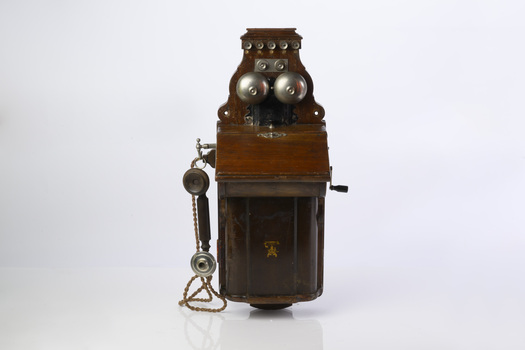Historical information
The Commonwealth Ericsson Wall Telephone was adopted in 1901 by the Post Master General as the standard magneto telephone throughout Australia.
It was designated by the Australian Post Office as: "Telephone No.1 - Magneto Wall, Commonwealth Type"
The No1 was widely used in country areas and new installations of this type continued throughout the 1920s.
Although classified as obsolete in 1951, several were still in service in country areas into the mid-1960s before the phone systems were fully automated.
The phone was originally connected to a 'party' line (several connections to a common wire), and the winder was turned in various combinations of long and short turns (being the codes unique to each individual connection) to alert the other party of an incoming call. Anyone could listen in on a party line, although courtesy prevented it occurring most of the time. Central telephone exchanges rendered the party line obsolete.
Physical description
Vintage wall telephone
The case originally housed two No6 dry-cell batteries to power the speaker (early models used a pair of Leclanche-like wet-cell batteries - the drawing from 1911 indicates that wet-cell batteries were still in use at that time). Batteries became obsolete when the phone was connected to a central exchange.
A plastic speaker horn was fitted in 2025 - the original was missing
Inscriptions & markings
on front - L M ERICSSON & Co STOCKHOLM
inside - serial number: 496018 H 5 (this serial number identifies the phone as being manufactured in 1904)
inside - slip of paper identifies date of manufacture as 1904
inside aftermarket writing - F.W.31










